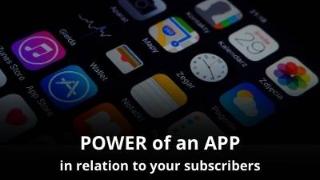What is the power of an APP for Mobile subscribers?
Mobile app have transformed the way mobile subscribers engage with services, offering a myriad of benefits that enhance user experiences and foster brand loyalty. From convenience and personalization to real-time interactions and advanced functionalities, the power of a mobile app for subscribers is undeniable in today’s digital landscape. This comprehensive analysis delves into the multifaceted advantages of mobile apps for subscribers, exploring key aspects that make them indispensable tools in the mobile industry.
What do you need to know about a Mobile App?
What is the power of an APP for Mobile subscribers?
Mobile app have transformed the way mobile subscribers engage with services, offering a myriad of benefits that enhance user experiences and foster brand loyalty. From convenience and personalization to real-time interactions and advanced functionalities, the power of a mobile app for subscribers is undeniable in today’s digital landscape. This comprehensive analysis delves into the multifaceted advantages of mobile apps for subscribers, exploring key aspects that make them indispensable tools in the mobile industry.
What do you need to know about a Mobile App?
- Make sure that the Mobile App is Convenience and Accessibility
- Including Personalized Experiences in the Mobile App?
- Real-Time Interactions within the Mobile App?
- Use Push Notifications with the Mobile App?
- The Mobile App and a Streamlined User Interface
- Make sure the App is Secure & includes Personal Data Management
- Increasing Brand Loyalty and Engagement with a Mobile App?
- What are the Do’s and Don’ts for Mobile Apps?
Make sure that the App is Convenience and Accessibility
Mobile apps redefine the way subscribers engage with services, providing unparalleled convenience. By residing on users’ devices, apps eliminate the need to launch a web browser and navigate to a specific website, streamlining access to services.
The one-tap accessibility of an app transforms complex processes into straightforward interactions. Whether checking account balances, making payments, or accessing personalized content, subscribers can do so with a few taps, enhancing the overall convenience of the user experience.
This ease of accessibility contributes to higher user engagement, as subscribers are more likely to interact with a service that is readily available and easily accessible.

Including Personalized Experiences?
Mobile apps are powerful tools for delivering personalized experiences, tailoring services to individual subscriber preferences. Through user profiles and data analytics, apps can understand user behaviors, preferences, and historical interactions. This data informs the delivery of personalized recommendations, content, and notifications.
For example, a streaming Mobile app might suggest shows based on viewing history, creating a curated experience for the subscriber. The ability to customize settings within the app further enhances personalization, allowing subscribers to tailor the app to align with their specific needs and preferences.
These personalized experiences foster a deeper connection between the subscriber and the service, increasing overall user satisfaction and loyalty.
Real-Time Interactions within the Mobile App?

Mobile apps facilitate real-time interactions, enabling instantaneous communication between subscribers and the service provider. Features like instant messaging, live chat support, and push notifications create a dynamic and responsive user experience. Push notifications serve as a direct communication channel, delivering timely updates, promotions, and important information.
This real-time interaction capability ensures that subscribers are promptly informed about relevant events or changes, contributing to a sense of immediacy and responsiveness within the user experience.
The ability to engage with the app in real-time enhances user satisfaction and keeps subscribers connected with the latest developments in the service.
Use Push Notifications?
Push notifications serve as a powerful communication tool, keeping subscribers engaged and informed in real-time. Mobile apps leverage push notifications to deliver timely updates, personalized messages, and alerts directly to the user’s device. This direct communication channel ensures that subscribers are promptly notified about new content, limited-time promotions, or important announcements.
The immediacy of push notifications fosters a sense of connectivity, allowing subscribers to stay informed without actively checking the app. Whether reminding users of upcoming events, notifying them of account activities, or delivering personalized offers, push notifications contribute to sustained user engagement and retention.
The strategic use of push notifications enhances the overall user experience, creating a dynamic and interactive relationship between subscribers and the app.
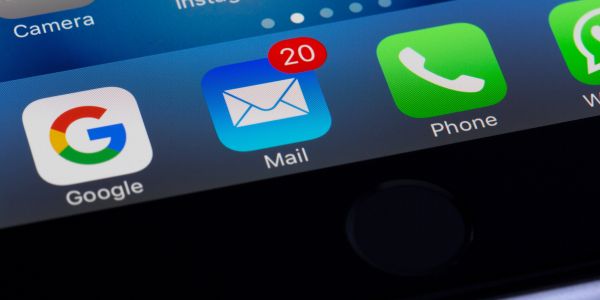
The Mobile App and a Streamlined User Interface
The design of a mobile app prioritizes a streamlined and user-friendly interface, focusing on both user interface (UI) and user experience (UX) principles. The goal is to create an intuitive environment that minimizes friction and enables users to navigate seamlessly. Elements such as clear navigation paths, intuitive layouts, and visually appealing designs contribute to a positive user experience.
Streamlined UI/UX design in the Mobile Subscriber App ensures that subscribers can quickly and easily access the desired features, reducing the learning curve for new users and enhancing overall usability. The visual consistency and simplicity of the interface create a cohesive and user-friendly environment, fostering a positive perception of the app and encouraging prolonged user engagement.
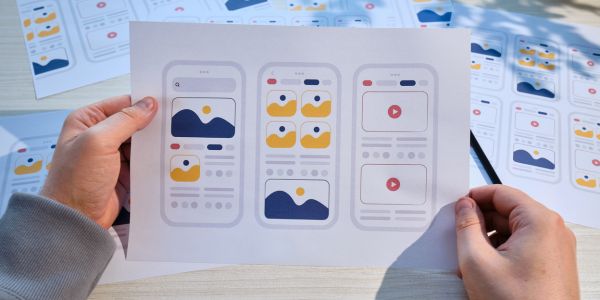
Make sure that the App is Secure and includes Personal Data Management
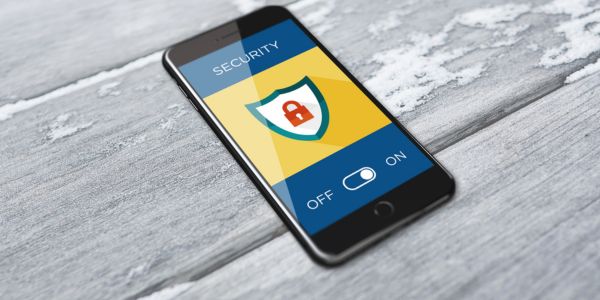
Mobile apps provide a secure platform for subscribers to manage their personal data, preferences, and account information. Robust security measures, such as encryption, secure authentication, and adherence to privacy standards, give confidence to users regarding the safety of their information.
Features like biometric authentication (e.g., fingerprint or facial recognition) add an extra layer of security, ensuring that only authorized users can access sensitive data. The ability to manage personal information within the app empowers subscribers with control over their data, fostering a sense of trust and privacy.
Transparent data management practices and adherence to privacy regulations contribute to a secure and reliable user experience, strengthening the overall relationship between the subscriber and the app.
Increasing Brand Loyalty and Engagement?
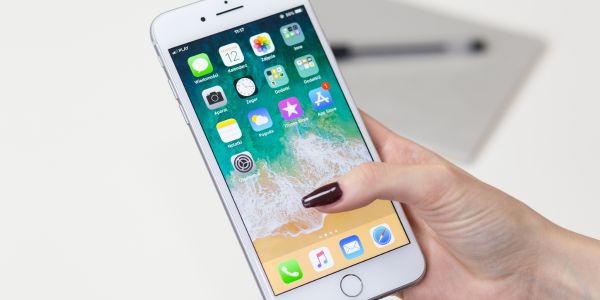
A well-designed and functional mobile app contributes significantly to brand loyalty by offering a consistent and positive user experience. Subscribers who find value and convenience in an app are more likely to remain engaged with the service, leading to sustained brand loyalty. The app becomes a direct channel for users to interact with the brand, reinforcing its presence in their daily lives.
Regular interactions through the app, such as making purchases, receiving personalized recommendations, or accessing exclusive content, contribute to the overall perception of the brand.
The convenience, personalization, and positive experiences delivered through the app create a strong bond between the subscriber and the brand, fostering loyalty and encouraging users to choose the app as their preferred platform for relevant services.
What are the Do’s and Don’ts?
The Do’s for the Mobile App are

Prioritize User Experience (UX)
Ensure a seamless and intuitive user experience. Streamline navigation, optimize layouts, and prioritize a clean design to enhance overall usability.
Understand User Needs
Begin by comprehensively understanding the needs and preferences of your user base. Conduct user research to inform app features and design decisions.
Leverage Personalization
Harness user data responsibly to deliver personalized experiences. Tailor content, recommendations, and notifications based on user behaviors and preferences.
Ensure Security Measures
Prioritize the security of user data. Implement robust encryption, secure authentication methods, and adhere to privacy standards to install user trust.
Utilize Push Notifications Strategically
Employ push notifications to keep users engaged. Deliver timely updates, promotions, and personalized messages, but do so judiciously to avoid overwhelming users.
The Don’ts for the Mobile App are

Compromise on Security
Never compromise on the security of user data. Implementing weak security measures can erode user trust and expose sensitive information to potential risks.
Overload with Notifications
Resist the temptation to overload users with push notifications. Excessive notifications can lead to annoyance and app uninstallation, negatively impacting user retention.
Underestimate UX Design
Never underestimate the importance of user experience (UX) design. A poorly designed app can result in frustration, decreased engagement, and negative user reviews.
Neglect User Privacy
Avoid neglecting user privacy concerns. Clearly communicate data usage policies, obtain consent, and ensure compliance with data protection regulations.
Ignore User Feedback
Avoid ignoring user feedback. Actively listen to user reviews, feedback, and suggestions to identify areas for improvement and enhance the overall app experience.
Allow Digital Onboarding
In the realm of mobile apps, the process of digital onboarding holds a pivotal role, acting as the gateway to a user’s journey within the digital ecosystem. The onboarding experience, facilitated by the app, sets the tone for a user’s relationship with the platform.
Successful onboarding is characterized by streamlined processes, intuitive interfaces, and personalized introductions to app functionalities. Guided tours and tutorials play a crucial role during this phase, ensuring users are not only efficiently onboarded but also well-acquainted with the app’s features. It’s imperative to strike a balance—introducing enough information to empower users without overwhelming them.
Digital onboarding with for example an eSIM is not merely a technical process; it’s an opportunity to build user trust, showcase the app’s value, and lay the foundation for a positive, lasting relationship. Prioritizing clarity, accessibility, and security during this phase contributes significantly to the overall success and user satisfaction of a mobile app.
As technology advances, the future of digital onboarding holds exciting possibilities, with the integration of artificial intelligence, adaptive learning, and immersive experiences reshaping how users are introduced to the digital landscape.
Combine Customer Care/Contact

Customer care within a mobile app ecosystem is the lifeline that nurtures user trust and ensures ongoing satisfaction. An effective customer care system embedded in the app provides users with accessible channels for support, guidance, and issue resolution.
This includes features such as in-app chat support, frequently asked questions (FAQs), and user-friendly interfaces for contacting customer service. Timely and personalized responses to user queries play a vital role in enhancing the overall user experience.
Mobile apps that prioritize clear communication, active listening, and swift issue resolution contribute to building a robust and positive relationship between the user and the service provider. As the digital landscape evolves, the integration of advanced technologies like chatbots and artificial intelligence further refines the customer care experience, offering users instant assistance and real-time solutions.
The customer care/contact feature is not just a support mechanism; it’s a cornerstone of user satisfaction and loyalty within the dynamic realm of mobile apps.
Allowing Mobile Payments with the App?
The integration of mobile payment functionalities within apps has revolutionized the way users transact, adding a layer of convenience and security to financial interactions. Mobile payment features embedded in apps streamline transactions, allowing users to make purchases, pay bills, and transfer funds with just a few taps on their devices. This not only eliminates the need for physical payment methods but also enhances the overall efficiency and speed of financial transactions.
Security measures, such as biometric authentication and encrypted payment information, contribute to user trust in mobile payment systems. The increasing adoption of mobile wallets, digital payment platforms, and contactless payment options underscores the significance of this feature.
As the landscape of digital finance evolves, mobile payments within apps are poised to play an even more central role, offering users a seamless and secure way to manage their financial interactions in an increasingly digital and interconnected world.
What is the future of a Mobile App for subscribers?
The future of mobile apps for subscribers holds exciting possibilities. As technology continues to evolve, apps will become even more integral to users’ daily lives. Enhanced personalization, advanced predictive analytics, and seamless integration with emerging technologies such as augmented reality and artificial intelligence will define the next phase of mobile app development.
The convergence of 5G Mobile Network technology with mobile apps will unlock new levels of speed and interactivity, providing users with richer and more immersive experiences. The future landscape envisions apps as dynamic, responsive, and indispensable tools that continually adapt to meet the evolving needs and expectations of subscribers.

Summary of Mobile Apps for subscribers
In summary, the power of mobile apps for subscribers lies in their ability to provide unparalleled convenience, personalized experiences, and real-time interactions. To harness this power effectively, prioritize user experience, leverage personalization responsibly, and ensure robust security measures. Strategic use of push notifications can enhance engagement, but it’s crucial to avoid overwhelming users.
Looking ahead, embracing emerging technologies and staying attuned to user feedback will be key to sustaining the relevance and impact of mobile apps in the ever-evolving digital landscape.
As subscribers increasingly expect seamless and personalized interactions, mobile apps that prioritize user needs and deliver exceptional experiences will continue to thrive. A Mobile APP is becoming very important for your Mobile Brand.







